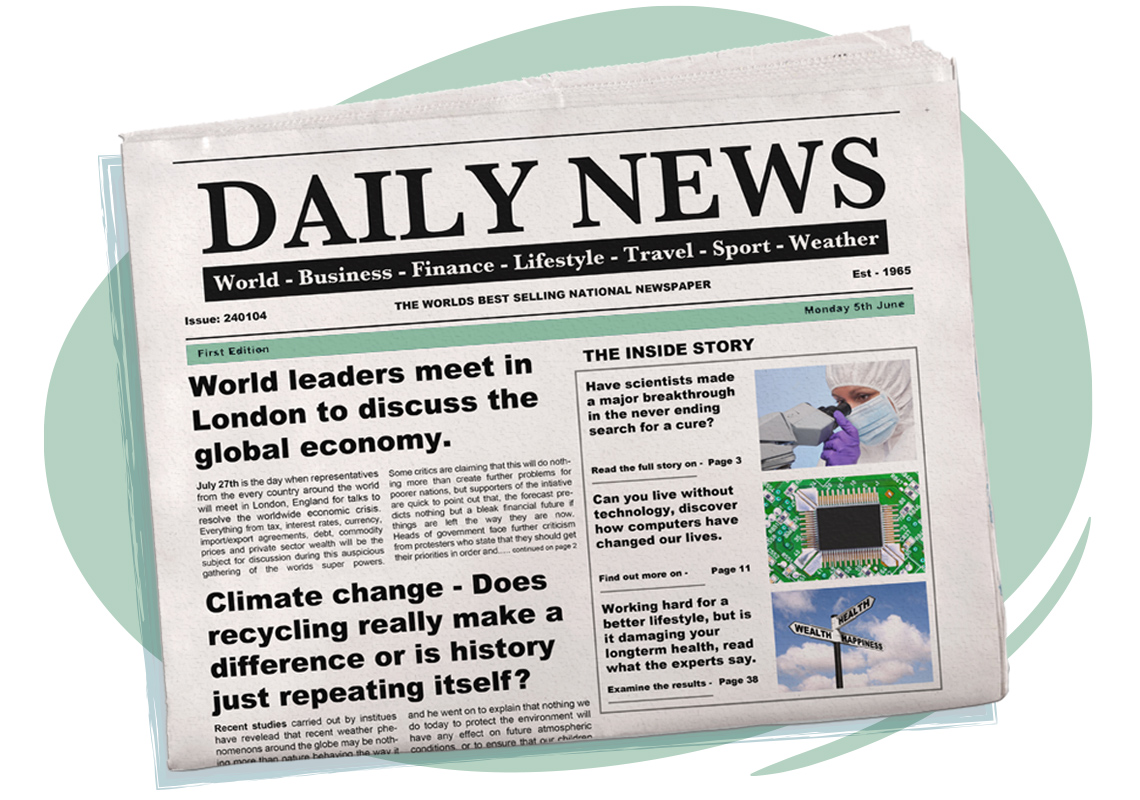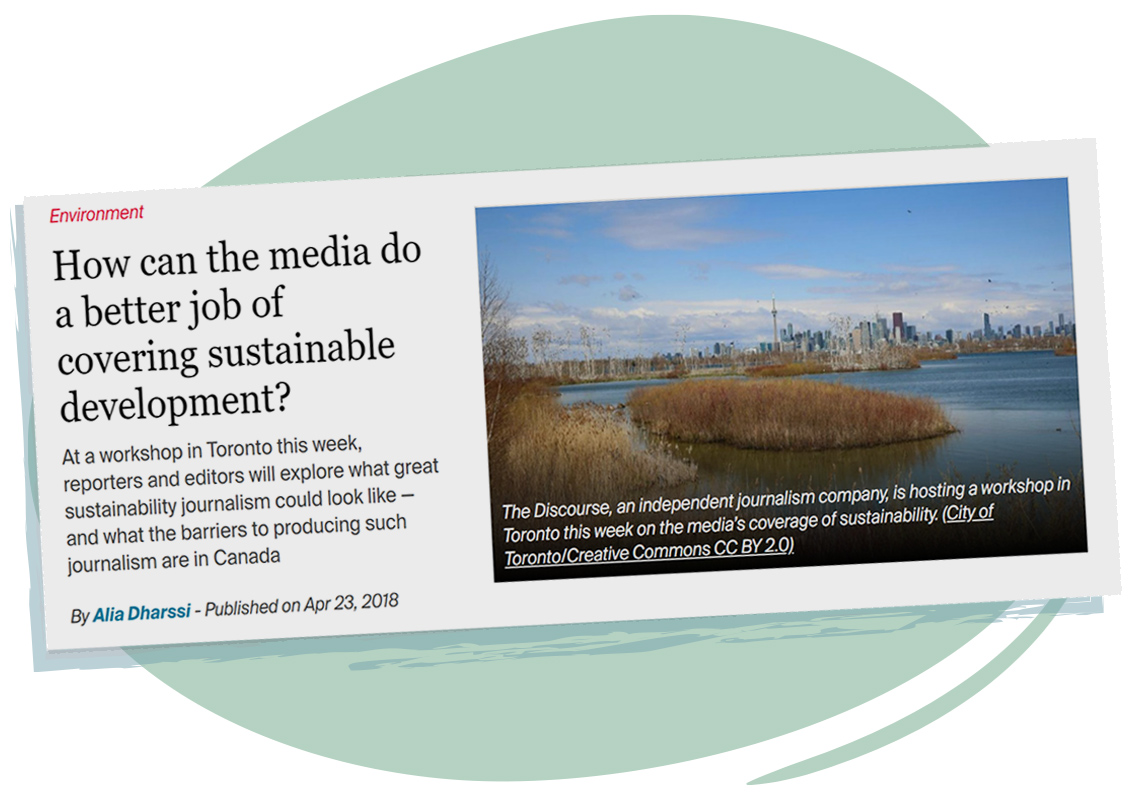Minds On
Different perspectives
Student Success
Think-Pair-Share
In this learning activity, we are going to focus on different perspectives within a text, both in narratives and nonfiction texts.
Consider the following two options. The first is an image, and the second is a headline.
Choose one of the two options and brainstorm the many different perspectives people might have in relation to the image or headline. Record your ideas in your notebook, in an audio clip, or using another method of your choice.


Note to teachers: See your teacher guide for collaboration tools, ideas and suggestions.
Action
Different perspectives
When readers read or listen to any type of text, either fiction or nonfiction, they experience the events of the text through a certain point of view, called perspective, shared within that text.
Perspective is a tool that authors use to provide a lens through which readers observe the characters, events and issues presented within the text. An author chooses the point of view that is most effective for the story they want to share.

First person perspective
This is when a text is written from the perspective of the author or a main character. It is usually found in narratives, autobiographies or opinion pieces. The main character or author refers to themselves within the text and use the pronouns, “I, me, my.” Some authors choose to tell a story through a variety of perspectives, switching who the first person telling the story will be.
Second person perspective
This is less common in writing and happens when an author is writing to the reader. In this way, the author tells the story using pronouns “you, your.”
Third person perspective
In third person perspective, the author writes as a narrator and uses pronouns “they, their, she, he.”
The narrator can be:
- an impersonal recorder, simply sharing the facts and events of the text
- omniscient, which means that they know the feelings and motivations of everyone in the text
- limited; the events and facts of the story are shared from only one person’s point of view
Authors make decisions when they tell a story or share an issue, event, or decision, with an audience. One of the decisions they make is what to share, how much to share, and how to communicate their message.
Reflection questions
- In most narrative texts that you read or listen to, what perspective is the narrative written from?
- Which perspective do you believe is most interesting in a narrative? Why?
- Which third person narration style do you think would be most effective – impersonal, omniscient or limited? Why?
- Is there any point of view you have not experienced in your narrative reading experience? Would you like to? Why or why not?
Identifying bias
Bias occurs when a statement reflects a preference, or prejudice for or against a person, object, or idea. A degree of bias occurs in most texts that we read or listen to.
Bias is found in texts when a writer or speaker uses a selection of facts, words, and decisions made about the amount of description to use, in order to convey a certain feeling or attitude. The purpose of bias is to convey a certain attitude or point of view toward the subject and message being shared.
As you read or listen to texts, you need to ask the following questions:
- What facts has the author omitted?
- What additional information is necessary?
- What words create positive or negative impressions?
- Whose perspective is being shared?
- What impression would I have if different words had been used?
- What would be other perspectives that would enhance the article? Whose voice is missing?
In nonfiction texts, one way to reduce the bias that may occur is to share a variety of perspectives, or points of view about a topic, event, or issue.
In the Minds On task, you brainstormed different possible points of view about an image or headline. Both topics shared in those images were ones that have a variety of opinions. If you were to read an article, opinion piece, or news story about either of those topics, if it only shared one point of view or perspective, it would include bias.
Read or listen to the following TVO article about how stores in Ontario are removing single-use packaging in their items. As you explore this article, consider the points of view that are being shared and how understanding perspective can help enhance your reading experience.

Press TVO.org to access Beyond plastic: How Ontario retailers are ditching single-use packaging.
TVO dot org (Opens in a new tab)After reading or listening to the article, ask the questions we discussed earlier.
Bringing it all together
Before moving into the Consolidation section, take a moment and reflect on your learning.
- How can you define bias?
- What from this series of activities is new learning for you?
- What questions do you still have?
- How can the point of view this article is written from relate to bias in nonfiction text?
- How can I use this learning as I continue to explore fiction and nonfiction texts?
Consolidation
Show what you know
The following images and headlines represent topics that include a variety of perspectives and points of view. Review each option, then choose one topic that you are interested in pursuing further. Once you have chosen the topic, based on the image or headline, your task will be to find at least 3 different sources that discuss this topic.
For each of those sources (articles, news reports, infographics, podcasts, videos, etc.) answer the questions you are familiar with:
- What facts has the author omitted?
- What additional information is necessary?
- What words create positive or negative impressions?
- Whose perspective is being shared?
- What impression would I have if different words had been used?
- What would be other perspectives that would enhance the article? Whose voice is missing?
Reflection
As you read the following descriptions, select the one that best describes your current understanding of the learning in this activity. Press the corresponding button once you have made your choice.
I feel...
Now, expand on your ideas by recording your thoughts using a voice recorder, speech-to-text, or writing tool.
When you review your notes on this learning activity later, reflect on whether you would select a different description based on your further review of the material in this learning activity.




